
Home
Privacy, Terms & Conditions
Occasional Papers
Ancient Mysteries
BOOKSHOP
Epsom and Ewell Waters
Archives/Reviews
Awards Gallery
Destiny
Malvern Waters and Malverns Worldwide
Somerville Diaries
Grotto News
Grotto Essays
Grotto.DirectoryAncient Mysteries - archaeoastronomy and cultural astronomy 
CELESTIAL ARMAGEDDON – THE ASTONISHING BIRTH OF ASTROLOGY?
with particular relevance to ancient stone circles and astrology as a credible discipline.
This extended essay for Birkbeck University of London is the second of two that develop the theme of early belief systems.
Introduction
Modern scholarship is throwing new light on the events on earth at the close of the Palaeolithic and the dawn of the Mesolithic some 12 thousand years ago. The Palaeolithic is the epoch traditionally associated with the ice ages and new interpretations of both new and old evidence is producing controversial results. In fact the interpretation is so startling that it revises completely our notions of the arrival of modern man. This in turn enables researchers to throw new light on particular subject areas such as astrology and to explain many of the conundrums that have previously baffled archaeologists, historians, geologists, physical geographers and researchers of ancient cultures. The key to such reinterpretation of the past is a multi-disciplined approach, aided by the mass of new information that is now coming to light as a result of modern scientific methods and research and the availability of hitherto difficult to access historic data by means of the internet. As a result we are now confronted with a real life scenario that equals if not exceeds the imaginations of the best science fiction writers. This paper considers when the legendary Horsemen of the Apocalypse rode rough shod through our solar system with dire consequences.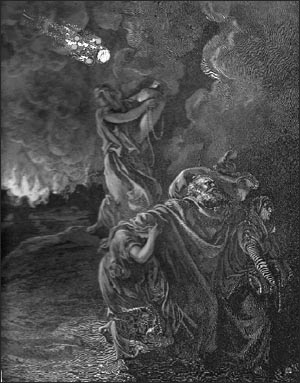
In Part I it was argued that there was once an early belief system that was universal and encompassed all mankind world-wide, a merging of spiritual and practical logical belief in the intra and extra terrestrial order. Their beliefs cemented the relationship of humankind with the all empowering cosmos. Wise men or Shamans, versed in such matters, developed a vast store of folklore, knowledge and speculation cloaked in ritual that enabled them to anticipate and predict. Such a belief system was to form the foundation of later formal religious beliefs world wide. Interestingly, as demonstrated by Campbell (2000,Ch.8), there appears to be a dearth of astrological influence in cultural expressions before the Mesolithic. For example, themes such as hunting are more significant in cave art. Authors such as Lewis-Williams argue that shamanistic practices are portrayed in Palaeolithic cave art (Lewis-Williams 2002). It may be that such practices, linked with altered states of mind were a forerunner of an astrologically based belief system, but the cosmos is not a major component in such art. This prompts the question what brought about this change in emphasis with regard to the belief systems of ancient man? Was it merely a gradual understanding of the role of the cosmos in a stable and fairly predictable world, or, as this paper agues, was it a subsequently forgotten, misinterpreted and confused event, much more sinister, that almost annihilated life on this planet, not all that long ago. 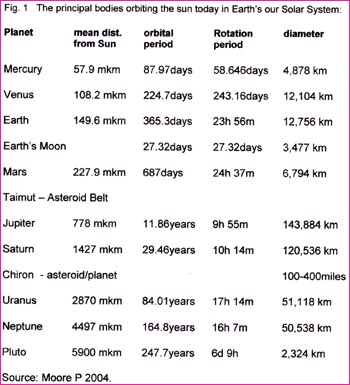
The hypothesis that there was a major event that permanently altered life on planet earth is, in my view, convincingly argued by Allan and Delair (1997). In so doing many of the mysteries of the past, in early literature, archaeology and geology are resolved. This was part of a cataclysm that disturbed the whole solar system, destroyed at least one sizable planet and its satellite, and also severely devastated Mars and Earth. What it is believed happened was that Phaeton, also known as Marduk was a major celestial body that collided with our solar system some 11,500 years ago. Phaeton was the product of a supernova probably some 45 light-years distant when Vela exploded, propelling its debris towards our solar system, visibly spewing fire as it approached the outer reaches. Passing closely to Pluto it disorientated the orbit before moving on to Uranus. Here pieces were torn off Phaeton as it disturbs the moons and equatorial alignment of the planet. Passing Saturn it throws Chiron into independent orbit as Phaeton moves towards our sun. It misses Jupiter but collides with planet Taimut and in so doing creates the asteroid belt from the resulting debris, at the same time collecting a satellite Kingu. Next it proceeds on its way to Mars where it alters the orbit and Mars collects two moons. On to Earth Kingu becomes detached and Phaeton passes between our Moon and Earth with catastrophic results. As it proceeds towards our sun it reverses the rotational spin of Venus before missing Mercury, finally ending up disappearing into the suns inferno.
Before this event there was a Golden Age on Earth. The climate was much milder, with less seasonal variation and only minor fluctuations in longer term ice cover. Polar ice caps were minimal if non existent and glaciers only appeared on the extremes of height and latitude. The day was likely longer being about 30 hours and natural catastrophes such as weather extremes, volcanic upheavals and earthquakes were much rarer. The last major impact from a celestial body on earth had been 77 million years previous when the Teklite Crater in Australia was formed, long before modern man emerged (Janke P R 2004 ). It was in the stability of the Palaeolithic commencing up to 2 million years ago, that man as we would recognise him emerged as the dominant species. In very recent times by comparison, Phaeton was to shatter that order.
The tradition of a Golden Age and of a fall from grace into barbarism due to catastrophes of apocalyptic proportions is enshrined in the memories and ancient writings of many peoples. These notions are, however, conventionally regarded as pure invention or allegorical. The existence of a surprising amount of factual evidence which suggests that these accounts are actually based on a series of events really experienced by humankind, is generally either ignored or treated with great caution by established scholarship. This is because attempts to explain how this Golden Age came to an end have hitherto been unconvincing or uncomfortably threatening to orthodox interpretations of history.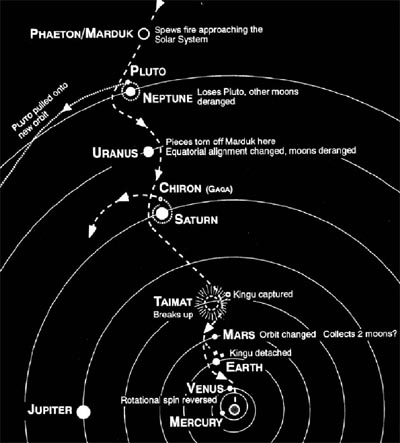
For those accepting the hypothesis that early mankind’s history was significantly different from one of gradual evolution, there are three main options, visitors from outer space, Atlantis and the lost civilisation or some form of catastrophe. The alternative history of humanity is, however, far more dramatic and interesting than the conventional and generally accepted version implies. Allan and Delair identify an exciting and challenging new interpretation of the information currently available to us.
Among the fundamental geophysical effects experienced by Earth resulting from Phaeton, were a massive fracturing of the crust, a realignment of Earth's axis, elevation of new mountains, and widespread rearrangement of land and sea. These changes were accompanied by an appalling global conflagration, a gigantic flood, and what has been described as 'collapsed sky' conditions. A bombardment by debris from the disintegrated satellite of the destroyed planet added to the worldwide chaos.
Much of Earth's animal and plant life was annihilated by these frightful events. Remains were often buried hundreds of feet below ground surface level and within vast new deposits which smothered huge areas, both on land and under the sea. Elsewhere the dead lay piled in caves, choked rock fissures, or were massed into veritable hills. Some havens and refuges did exist, offering shelter to various faunal and floral species from flood or fire - then to have to endure the appalling conditions which followed. These included intense cold, occasioned by chronic atmospheric pollution which severely restricted the solar radiation reaching the Earth, loss of vital resources such as shelter, tools and sources of warmth and nourishment. The extent of the damage was so great that the immediate survivors found themselves literally catapulted into what was, in effect, a new world.
The possible origins of this terrible calamity are considered in some detail, the authors Allan and Delair concluding that, after dismissing comets, asteroids and giant meteors, the most likely candidate is the Vela supernova explosion which, on the astronomical scale of things, occurred uncomfortably close to our solar system relatively recently. This story is pieced together from a variety of conceptual; frameworks: from the study of terrestrial organic remains; evidence from present land-forms; the testimony of geophysics and astronomy; and the traditional accounts and memories of numerous peoples round the world. It becomes clear, in the process, that modern science's invention - 'the Ice Age' more recently modified to “Ice Ages” - evades abundant important evidence which points coherently to a rather different interpretation of events.
The presentation of the detailed hypothesis is divided into six distinct parts by Allan and Delair as follows.
1: Challenging Uniformatism
The character of our forebears and the conditions under which they lived is a subject which has for long fascinated people. Science today holds that the primates have been living on the Earth for at least three million years, and that modern, erect man has been around, slowly adapting to a perceptibly changing Earth for hundreds of thousands of years. Conventional modern dogma insists that there has been a gradual and spasmotic evolution of modern people from primitive cultures, as they emerged from a hostile Ice-Age environment which had gripped the world for a million years.
This 'uniformitarian' picture - which claims that environmental conditions usually evolve infinitesimally slowly - has, however, been current for only 150 years. Scientists had observed that many of the clays, gravels and sands in various parts of the world appeared to have been laid under chaotic conditions on rock surfaces which had been pulverised, smashed or polished. Early authorities attributed these to powerful floods of water or to some other cataclysmic agency. These advocates became known as 'catastrophists'. Subsequently, their explanations lost favour, and the pioneers of the then new subject of glaciology a century and a half ago 'invented' the 'Ice Age', lasting a million years, to account for many of the Earth's surface features. The Pleistocene epoch was specially coined to accommodate the field of evidence supposedly supporting the 'Ice Age' invention.
This first part of Allan and Delairs theory challenges contemporary theories by showing in a detailed survey that well-established geological, palaeontological and biological evidence point to this planet undergoing sudden and very major physical changes about 11,500 years ago. (In fact, the 'Ice Age', as proposed by orthodoxy, is abandoned by the authors in favour of a much shorter later period of intense cold). Nearly all the phenomena ascribed to conventional Ice Age theory can be interpreted as the result of natural convulsions of worldwide proportions. The authors - citing much reputable supporting evidence - argue that the great mountain ranges of today and the great crustal displacements which, along with enormous seismic and volcanic eruptions, changed the face of the Earth, in fact happened violently, rapidly and comparatively very recently.
A foretaste is given here of important evidence that just will not fit the uniformitarian theories. For example, evidence from Siberia, the coldest area in the world, but one which has never been glaciated; or of rocks showing all the classical features of 'glacial action', yet apparently eroded from a direction which conventional glacial action could not have achieved.
2: Victorian Ice Ages Questioned
Modern biology has attempted to dovetail its theories with the conventional Ice-Age doctrine. Innumerable unassailable facts, however, refuse to comply with this. Some notable botanists have openly refuted it. They have pointed out that Alpine flora must have originated in pre-glacial times, as insufficient time has elapsed since the end of the Ice Age for the development of such a rich diversity of plants. The existence of identical species of plant on different sides of a large ocean barrier (eg between Europe and Greenland) indicates that in recent times there must have been a land route between the two. The remains of typical pre-glacial Pliocene or Miocene species (according to conventional theory, at least ten million years of age) are frequently found to be scarcely fossilised. Also, a number of examples are given to show that the climates in Northern Europe and in Siberia were much milder in recent times than they are at present.
Examples of dislocated continental floras are given. In the North Atlantic, for example, the Azores and Canaries were recently connected to what is now North Africa. From this kind of evidence, a picture is built up of a world, during relatively recent times, that was very different from what we have now; of a large landmass continuous from northern Siberia to Alaska; of another linking N W Europe with Greenland; of an enormous continent connecting South America, Africa and the southern Indian Ocean; and of another, now mostly submerged, in the South Pacific.
Mammoths and mastodons are usually considered as animals which evolved to thrive in icy tundra type environments. Yet mammoths preserved in icy soils in Siberia have been found with temperate grasses in their stomachs. Evidence has now come to light of vast herds of mastodons being massacred by early man in North America. In the conventional chronology this would have indicated the antiquity of these proto-Indians. Now it appears that the mastodons lived in a warm equable climate and survived into comparatively recent times, up to 3200 BC in Siberia.
One of the most fascinating bodies of evidence is provided by animal remains found in caves, especially in Europe, Asia, South American and Australasia. These usually consist of chaotic agglutinated piles of disjointed bones of a variety of species that could never have co-existed in the same environment - tropical species in northern graveyards and northern species at many equatorial sites. Bird remains in Californian tar-pits illustrate this anomaly even more tellingly. We can only conclude that a vast cataclysm brought about such global carnage.
Allan and Delair argue therefore that the enormous geophysical disturbances described earlier indeed made dreadful and often fatal inroads into animal life almost everywhere, rendering many species extinct and engendering a very different geographical distribution for the species which survived.
3: The Enduring Memory
Traditions and legends which seem to describe some of the tremendous catastrophic events that terminated Pleistocene times, have never before been collectively studied in detail. Although the authors have amassed a tremendous amount of persuasive and fascinating material - sufficient to fill a book on its own - only a representative selection is summarised.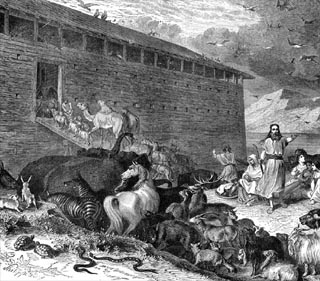
The study of such ancient material is fraught with difficulties, as interpretations cannot be subjected to any sort of “reasonable proof” scientific verification. There are many approaches, from treating them as ingenious fabrications for entertainment, to seeing them as symbolic tales describing how primitive people saw their world, or as religious teaching. Allan and Delair investigate here the possibility that some of these accounts and traditions are based in fragmented memories of once real people and events, and are therefore genuine echoes of history.
A theme common to the traditions of most peoples of the world is that of a great flood or deluge. References are often also made to a conflagration or firestorm and to land being lost or raised. Not infrequently also, we hear of strange substances falling from the sky - like gravel, stones, blocks of iron or resinous substances. Some speak of a collapsed sky, of changes in the rotation of the Earth, of terrible winds, continuous lightning, volcanic eruptions and the boiling of lakes and streams. Prolonged darkness is frequently alluded to, and there is even mention of the rapid, widespread formation of ice.
Allan and Delair in this section of their argument bring together some of the traditions which most obviously relate to these various events. Very significantly, many accounts specifically ascribe these changes to a cosmic agent, anciently remembered by a variety of names, of which Phaeton is one of the best known.
4: Cosmic Conflict
The authors Allan and Delair suggest that today we are rather in the position of the owners of a vandalised building who, not knowing who the vandals were, could nevertheless infer the reality of their visit from the testimony of eyewitnesses and the chaotic state of the building. The damage to Earth is only too apparent, and eyewitness accounts mentioned in Part Three have described both the visitation and the damage.
Part Four is like the unravelling of a murder mystery: how could this catastrophic event of 11,500 years ago have come about? Some basic facts have to be explored: about Earth's structure and magnetism; how polar shift or crustal displacement could occur; the nature of the solar system and the evidence for a planet having disappeared. Evidence for a cosmic upheaval having taken place at that time is considered, leading the authors to come to conclusions very different from Velikovsky's - who studied similar evidence in his Worlds in Collision (Velikovsky I 1950, 1969ed.).
Perhaps the most remarkable support for this apocalyptic heavenly visitation is that given on Akkadian cylinder-seals found in Mesopotamia. This ancient epic describes how the peace of the solar system was disrupted long ago by the arrival of a 'new' god, Marduk, and traces the resultant havoc among the planets step by step. Marduk (Phaeton under another name) was a huge and awesome radiant visitor from interstellar space, spewing great jets of fire from time to time. There is a remarkable description of Marduk's break-up of a major planetary neighbour of Mars, Tiamat, and its subsequent departure sun-wards with a great mass of the stricken planet's debris.
The authors analyse the Babylonian epic in terms of how its story fits in with what we now know of our Solar System. They also look at other traditions, particularly from Greece and Mexico, which seem to record other aspects of the same story. They take Velikovsky to task for some of his specious arguments, and use some of the evidence from the Mariner space flights to refute some earlier theories about this subject.
One of the drawings in the book shows a hypothetical scheme of Phaeton's (Marduk's) path through the solar system. This is inferred from the fact that some planets appear to show evidence of disruption whilst others do not appear to have been affected and are therefore presumed to have been distant from its path. The Allan and Delair argue that Phaeton's enormous influence on some of the planets suggests that it possessed an abnormally intense electro-magnetic field which was naturally attracted to the equivalent fields of the planets it encountered and disturbed.
Any external agent capable of disturbing planetary motion would have had to be exceedingly powerful. Comets and asteroids are shown to be inadequate candidates. Considering the available evidence, Phaeton was a high velocity planet-sized fragment from a supernova explosion. The authors surmise that Phaeton, being of stellar origin, would have possessed the visitor's traditionally reported characteristics, and they cite evidence which strongly points to just such a supernova known to astronomers as the Vela event occurring at unusually close quarters astronomically about 13,000 years ago - approximately 1,500 Earth years elapsing for Phaeton to supersonically traverse interplanetary space.
5: Anatomy of a Disaster
Analysis of evidence for the kind of world that existed before the 'Deluge' indicates a far more genial climate than exists today, with luxuriant plant growth even in areas which are now decidedly polar. Such conditions could only have existed if Earth had previously rotated more slowly and around a more perpendicular axis than today, with days being longer and the seasons largely undifferentiated. There is evidence from a number of disciplines to indicate that this was in fact once the case. Furthermore, from botanical evidence we know that the distribution of land and sea differed considerably from that of today and there is much evidence to suggest that mountains and deserts were at this time generally modest in size, and seas relatively shallow.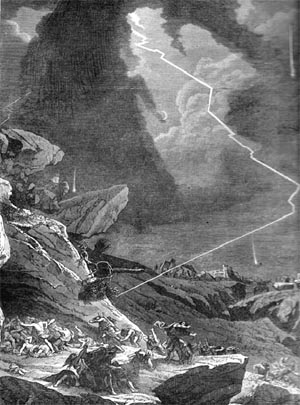
A medieval map of the north Atlantic region is discussed. It shows some modern features accurately, yet shows a topographically detailed Greenland without its ice cap and a number of large islands that no longer exist. Some authorities have indicated that the map includes information from much older sources. If it is indeed as accurate as it seems to be, its testimony against Ice-Age interpretation of geophysical changes is strong. Also, contrary to the established theory that ice sheets smash the bedrock over which they lie, reference is made to thick ice in Antarctica which protects the strata it presently mantles. Such considerations point clearly to a need for an alternative interpretation of Earth history.
Allan and Delair hypothesise about the dramatic and literally earth-shaking events brought about by Phaeton's invasion of the solar system. As Phaeton approached Earth the effects were catastrophic. These included extraordinary electromagnetic and geophysical effects on Earth; a change in the orbit of the Moon and of the planet's axis; tremendous volcanic eruptions, and unbelievable havoc on the whole surface of Earth and its biosphere. The experience of these events by humankind included such phenomena as 'collapsed sky' (perhaps like that predicted by modern authorities as likely to accompany a thermonuclear holocaust), boiling waters, a loss of sunlight caused by constantly erupting volcanoes, earth fractures, firestorms, hurricanes, bombardment by cosmic missiles and strange objects (for which there seems much evidence in deposits of non-terrestrial materials), rains of fire or 'blood', piling up of the oceans and a 'torrent from heaven' (the Deluge itself) which scoured the very surface of Earth and left impressive hills of trees and animal remains, particularly in the Arctic; finally refrigeration - the real 'Ice Age' which lasted during the early Mesolithic compared with the conventionally-advocated million years or so.
The authors correlate much relevant information from various disciplines on a theme-by-theme basis, enabling us to picture the course of events as they unfolded. Many traditions, for example, speak of intense cold, conflagration, terrific winds, flaming fragments dropping from the skies, floods and torrents of rain which were directly associated with significant events and with a period of great and prolonged darkness, which quickly followed a world-wide Deluge. These traditions are not only consistent with one another, but also reflect the sequence of physical processes and effects as defined and supported by geophysical knowledge. Furthermore, they largely coincide with the effects that astrophysicists would expect in the event of a close hostile cosmic fly-by.
6: Phaeton's Legacy
What did the world look like after the immediate and devastating physical effects of the encounter had subsided? Astounding quantities of gravel, sand, clay and mud had accumulated on hillsides - even on hilltops - and had spread over valley floors and across plains. The new topography brought about new drainage systems and lakes. Organic debris was deposited in fissures, cracks, and the innermost recesses of caves. Gigantic rafts of mangled vegetation lay in thick banks as far as the eye could see and the stench of death and decay pervaded many regions, especially in lower latitudes where most fresh water sources had become polluted or poisoned.
The question of how any living being could survive such a catastrophe is very interesting. There are many traditions of Deluge heroes and arks. There were parts of the globe which were apparently not devastated to the same degree. Many must have sought refuge in caves, and indeed a number of traditions speak of this. By its very nature, the Phaeton disaster affected all people indiscriminately. Small cross-sections of pre-catastrophic society found themselves sharing common refuges, and where such groups contrived to survive, entered the post-catastrophic world together equally destitute and bereft of basic necessities, literally thrown back into a stone age. Steel goes so far as to suggest that Neolithic Long Barrows are a subsequent response to a major celestial threat. Originally conceived as shelters in the event of a repetition, they evolved an alternative use as burial mounds (Steel 1999).
Four Horsemen of the Apocalypse
In considering the implications of the Allan and Delair scholarship as précised above, the legendary horsemen are a possible metaphor for cataclysmic event brought about by Phaeton. They occur in early Christian literature such as Revelations, Zachariah and Daniel. The disclosure of the hidden wisdom through an oracle or prophet in this instance discloses what might be expected as Gods justice is dispensed on mankind. This is a foretelling, relying on historical events in the cultural memory to propound what might be in the future. In so doing the horsemen are arguably an allegory for both the passage of Phaeton and its accompanying bodies through the sky and the four principal effects that planet earth suffered. Apocalyptic beliefs predate Christianity and appear in other religions, for example the Hindu concept of parlay.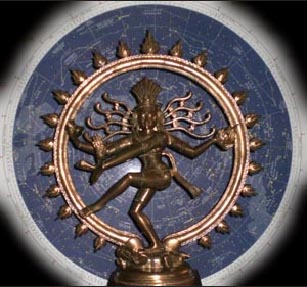
The first horseman is seen to represent power and conquest and is white in appearance. The unstoppable disastrous effects of Phaeton are encapsulated in this notion of a supreme and all dominant presence in the sky. The second horseman is red, symbolising spilt blood as the mass elimination of life on earth took place. This leads to the third horseman, who is black, epitomising desolation and scorched earth, with famine and plaque, appalling atmospheric conditions and lack of resources. And then finally for many the fourth horseman, the colour of the dying through sickness and decay, with death followed by Hades. Thus it is believed that this is how the world will end.
The roots of such legend lies in the vast system of cosmic law that once prevailed concerning the nature of man, reincarnation and the effect of celestial cycles on earth together with the need to calendarise and record events in a meaningful time frame. Subsequently perverted and the knowledge disintegrated and misunderstood, examples of beliefs emanating from this ancient wisdom occur in other religions. In particular Hinduism and Buddhism encapsulate the ethos of the ancient beliefs. Is the god Shiva the embodiment of Phaeton? Lord of the Dance, he is reputed to have danced out the creation of the world but when he grows tired, he relapses into activity and chaos ensues. Representations of Shiva show him surrounded by the symbols of creation, destruction and rebirth.
Other Cataclysm theories
Celestial cataclysm theories, like ancient visitors from outer space theories, abound and have been prevalent since biblical days. Academics have tended to adopt the slow evolution approach as the accepted paradigm; however modern scholarship is merging the two approaches as our understanding of the past evolves. As a result the development of the celestial cataclysm theory can be traced back. Velikovsky published a detailed argument for such in 1950, which subsequently went to sixteen impressions by 1969. Allan and Delair (1995+7) took much of their inspiration from this earlier work. Velikovsky argued a multiple cataclysm theory during the Old Testament period, drawing on a wide variety of physical evidence and ancient texts. The Velikovsky argument differs from that of Allan and Delair by suggesting that the causation was a comet that subsequently became Venus, shifting the position of Mars in the process. In particular Velikovsky spotted the commonality of the roots of many religions and identified this as an area justifying further scholarly study (Velikovsky 1969, p.362). Allan and Delair were able to revise this earlier approach to a celestial cataclysm in the light of scientific advances during the latter half of the 20th century.
Other authors who used Velikovsky’s work included the legendary Erich Von Daniken with his visitors from space notions (Daniken 1969). The clear rebuttal by Castle and Thiering is a lesson to all that what sounds superficially good on paper has to be firmly based on the surviving evidence and provable facts to maintain scholarly credibility (Castle and Thiering 1972).
Allan and Delair are certainly not alone in propounding the notion of a global cataclysm in recent history. Hancock (1995+6) convincingly argues the case for a major catastrophic event taking place at the end of the ice ages. Drawing on similar evidence to Allan and Delair, Hancock however, without suggesting causation, concludes that there was major continental shift through crustal displacement, particularly in Antarctica, where once a pre-cataclysm advanced civilisation had existed. Whilst Hancock may have adopted poetic licence, as he did with Pyramid alignments, by describing Antarctica as being the landmass for an advanced now lost civilisation, authors such as Flem-Ath and Wilson argue that some form of organised community did exist (Flem-Ath and Wilson, 2000). It was the remnants of the pre-cataclysm civilisation that then marshalled their resources and set out to not only make a permanent record in stone but also to re-orchestrate civilisation throughout the world.
The dating that Hancock gives his cataclysm is similar but not identical to Allan and Delair and interestingly he cites the controversial case of the Egyptian sphinx at Giza to illustrate the importance of a celestial calendar for orchestrating the management of the passage of time. The sphinx was supposedly aligned to the equinox. Furthermore it was made in the embodiment of Leo, an age that because of precession would not return for a further 26,000 years. When linked with the three pyramids of Giza, representing the three stars of Orion’s Belt, which c.10,500 years ago reached the lowest point in their processional cycle, a marker in time emerges. Around 10,450 BC the sun at the vernal equinox rose in the constellation Leo. These two markers combined provide an enduring record of a point in time when Hancock’s cataclysm took place or mankind was re-establishing itself, depending on whose dating you subscribe to.
Hancock also investigates in great detail South American early civilisation. He concludes that there was a complex celestial knowledge that pre-dated conventional ideas on when civilisation was established in that region. It is unfortunate to say the least that writing was such a later invention however other forms of communication and record can be argued, for example in architecture and story telling. In particular Hancock notes the common themes in both early South American and Egyptian architecture and culture and sees a commonality derived from an earlier era. The prevalence of pyramids in both is noteworthy providing important celestial “observatories” as well as venues for extreme religious events, including sacrifice in the case of the South American versions. Hancock also argues the case for post-cataclysm “envoys” from elsewhere visiting South America to assist in the recovery from the global disaster, thereby ensuring that vital knowledge was redistributed to the remnants of the shattered communities.
Pre-empting both Allan and Delair and Hancock is Donovan (1989). Donovan considers numerous mass extinctions of life on earth over geological time. He considers 9 extinction episodes from the late Cambrian to the late Pleistocene, the latter being of particular interest with regard to this paper. He attributes the causes of such extinctions to a variety of events, including, in the case of the late Pleistocene the post-glacial warming and the predation of humankind between 9000 and 18000 years ago. Allan and Delair’s subsequent account of causation of this particular extinction event takes the investigation one step further back by attributing the causation to Phaeton and the associated celestial activity. Phaeton in turn led to the disruption of the Ice Ages and the intrusion of modern man into life on earth.
Donovan makes a number of valuable observations about extinctions in general that are relevant. In particular that extinction is a fact of life; it is a question of when rather than if. Environmental circumstances fluctuate over the aeons of time and this will intermittently cause radical changes in ecosystems with the resulting loss of flora and fauna. The late Pleistocene extinction is of particular value in this respect in that much of the evidence is first hand and arguably the earth is still in post trauma recovery. Donovan concludes that a protracted period of species origination with increasing complexity of interdependences is necessary prior to a mass extinction. Then any changes in environmental circumstances must be severe enough to create an unsustainable stress over a short period of time. These can be relatively minor but have the ability to impact on fragile complex interdependences. A combination of cyclical climatic changes and unique major events then precipitate a breakdown in the interdependence of species resulting in co evolutionary disequilibrium as existing ecosystems collapse. This will result in rapid widespread extinction, particularly of higher order species that are reliant on complex ecosystem infrastructures. Species that do survive will need to adjust to the new circumstances by redistributing and creating new interdependences within the living world. The scale of such extinction will reflect the scale of the causation and the complexity of the interdependences prevalent at the time.
From this we can conclude that mankind was exceedingly lucky to have survived the Phaeton event. The shattered communities would have necessarily had to regroup and re-establish. Part of this process was the pursuit of a prediction process to anticipate future events and come to terms with the present circumstances.
Early Belief Systems, Stonehenge and Re-interpretation
Having considered the summarised detail of the Phaeton event 11,500 years ago we can now re-interpret and decipher a number of mysteries of the past.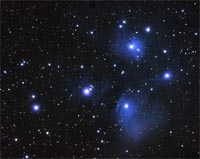
It can be seen how the appearance of strange fiery bodies in the sky, steadily approaching earth over a period of weeks, culminating in catastrophic disaster would be an event that would remain in the strong cultural memory for generations. Fear of repetition and the frantic searching for signs or omens of repetition would have been a powerful motive for studying the cosmos. In fact the notion that the sky is our destiny survives today in religious terms but has been largely forgotten by mainstream archaeology and science. Seeking explanations and understanding, a vast mythology would have developed to come to terms with this earth shattering set of circumstances. This was the substance of the early world wide belief system that ultimately, a few thousand years later, was to lead to the development of religions as we know them today. The reliability of the Golden Age was destroyed in a comparatively short period of time, with major loss of life and resources as well as a total rearrangement of weather systems, land masses and life. The psychological disposition of the survivors would mean that to cope they needed some belief system to clutch at. The will to survive in extremes of difficulty would rely on hope. Hope for the future would be bolstered by understanding and a means of anticipating future threats to their own survival. Such creativeness would have been done without the insights of modern scientific knowledge, in a manner that we today would dismiss as allegorical or even fiction. This however manifested itself in a word wide belief system based on the power of the cosmos as set out in paper 1.
Initially there would have been an extended period of slow recovery coinciding with the Mesolithic. As human ingenuity developed integral with this would be the creation of an ethos that built on the memorable experience of the Phaeton event. How did early man record this event for the posterity of future generations? There was no written word and so world of mouth would have been the initial means of recording history for the benefit of the future humankind. Furthermore there was no counting system to mathematically cope with the rhythms of the celestial bodies. Days, lunar months and the yearly sun cycle were of great importance as was anything that disrupted the patterns of life. Art, architecture, the zodiac and the landscape itself, were alternative means of monitoring and recording and we can now re-interpret monuments such as Stonehenge in the context of earlier events. The celestial alignments discussed in Paper 1 and the importance of prophecy through an oracle starts to have a real raison d’etre. Even cup and ring carvings, associated with ancient monuments, take on a new aura when seen as visual illustrations of the Phaeton intrusion or maps of significant celestial clusters. Arguably with the tilting of the earths axis and the onset of contrasting seasons of the year, the need for a calendar became paramount and by the Neolithic stone circles provided a localised community facility for agreeing, disseminating and ritualising such information.
In Paper I it was suggested that Britain may have been the legendary Atlantis. Allan and Delair resolve the question of Atlantis with the identification of extensive land masses that existed between present day Asia and North America in the North Atlantic, which included Britain. These disappeared about 11500 years ago as a direct result of the cataclysmic effects of Phaetons passage between Earth and its Moon.
Another problem that has remained unresolved also now finds a possible, albeit controversial, solution (McCracken 2008). The Bluestones of Stonehenge were transported from the Preseli Hills in Wales to where they were subsequently used in the construction of the monument. Current scholarly theories as to how this movement took place are divided between glaciations or hauled by mankind. It can now be seen that the deluge, where whole oceans were strewn across the lands in the aftermath of Phaeton provides another solution. The water and rubble flows, at a transcontinental level, would easily transport such rock to the Salisbury Plain. Britain was well within the first generation of after effects danger zone as Phaeton pursued its course of destruction from the north-west over Asia, shedding debris and chaos as far afield as The Americas, Western Europe and Africa.
In a similar vein, Silbury Hill continues to defy explanation for many archaeologists. Why did early man invest major resources into building a conical hill in the late Neolithic around 2400BC (Leary J 2008 p.14.)? Two thousand years before Christ, Babylonians and Assyrians scanned the skies for omens of their fate as a distant echo of Phaeton and as a means of exercising Oracular powers. This has given rise to many ancient structures that were manifestations of the early belief system based on the cosmos (Bobrick B 2005/6 p.15.). Silbury can be interpreted as an observation platform to provide an enhanced visible, level horizon to observe the passage of the celestial bodies. To give one example of how this might have been applied; the use of such a location for more accurate birth and the related nativity omens would have produced a significant enhancement of the power and prestige of the oracle presiding over the affairs. Also it would have assisted in determining more accurate calendars of celestial events, enabling such calendars to be applied to everyday occurrences on earth, both historically and anticipatory.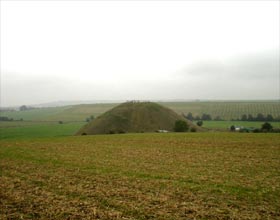
Transition from primitive incomprehension to religion
How can we explain the transition from an early belief system based on the cosmos to the emergence of religions that we would recognise today? As humankind started to recover from the celestial Armageddon 11,500 years ago, we can speculate that the priority was to re-establish a viable life style that coped with the new circumstances. Utter confusion about the events of recent history would have prevailed and part of the process of coming to terms with it would have been to create a framework of understanding. Humankind was and still is, in the ongoing process of developing enhanced self consciousness. It is this concept of self that differentiates us from other living species. Leakey observes that the development of self leads to the application of human behavioural traits to all around. “This tendency to anthropomorphize flows naturally from the context in which consciousness evolved. Consciousness is a social tool for understanding the behaviour of others by modelling on one’s own feelings. It is a simple and natural extrapolation to input these same motives to aspects of the world that are nonhuman but are nevertheless important.” ( Leakey R 1994 p.156.)
As self consciousness developed in human thought so the process of humanisation of other animate and inanimate objects would have developed. Inevitably the celestial bodies would have been similarly assessed using this humanized conceptual framework. Over time mankind extended the principal by applying the characteristics of other living creatures in an effort to find ways of rationalising and understanding of key issues for humanity. Even so other living creatures would in turn have been understood by using humanistic measures in appraising behaviour. This personalisation of nature would have led to the creation of mythological figures and legends. It led to the creation of daunting and powerful gods and the astrological labelling of celestial bodies and constellations after living creatures. Religion, with all its complexity and ceremony is but a small step further. It can be seen therefore that the early belief system in the cosmos was simple, confused and religion was to provide the eventual means of coming to terms with issues that challenged the imagination. This was all part of the ongoing process of developing human self consciousness for evolutionary advantage.
Explaining modern day astrology
Today “mystic Meg” and the modern “gypsy” astrologer continue to captivate out imagination. The proliferation of prediction forecasts amazes those who seek a valid science behind what is often considered “hocus pokus”, even by those who regularly scrutinise their own birth sign destinies. Such star sign fortune telling is a long way from the early belief system that resulted in Stonehenge, albeit their root lies in the wisdom and belief system of Mesolithic and Neolithic man. Scholars such as Whitfield identify the transition period sometime between the 7th and 5th centuries BC. It was at this time that the Zodiac was divided into 12 equal parts each of 30 degrees in Babylonia. This opened the door to the development of the mathematical astrology of today, rather than the intuitive divination and omens that the revamped "science" replaced. (Whitfield 2001 p.7,11/2,15,21)
A clue to explaining the phenomenon of subsequent perpetuation of this revised, unprovable science can be seen in the behaviour of baby turtles. The mother buries her eggs above the high tide level on a sandy beach. On hatching the baby turtles immediately make a mad dash for the sea before the marauding birds can make a meal of them. This is not conditioned learning. It is instinct based on the collective inherited memory of the species and vital for survival. Such inherited predispositions to act in a certain way proliferate in the animal world including humankind. Campbell (2000) elaborates on this by pointing out that in the human species ceremonials and mythology assist the transmission and reinforcement of the collective memory from one generation to another.
It has been shown that often the collective instinct and community memory is no longer applicable to circumstances but yet remains in the culture and in the inherited instinct for generations. With its provenance long forgotten, it continues to influence behaviour as particular circumstances arise. The unconscious application of the power of such instinctive behaviour manifests itself in everything from religions to the use of cosmetics to beautify the features. It thus becomes entrenched in the culture, reinforced through conditioned value systems and perpetuated by ritual. Campbell notes that babies have a predisposition to smile at eyes, nose and unwrinkled forehead. These are all cultural symbols of beauty used in identifying a possible friend or partner. It can be seen that instinct and its manifestations has the effect of further perpetuating the collective inherited memory through selective breading with those of like intuitiveness.
Astrology presents a similar scenario. The response to triggering stimuli in the case of astrology manifests itself as an art rather than a science, as the characteristic lifelong human natural tendency to play takes over from the “adult” scientific approach, particularly with females. It is an echo of when the understanding of the cosmos was recognised as a real and vital part of human survival. Once a combination of calendriacal prediction and early traumatic conditioning through experiencing cataclysmic world-scale disaster, modern day astrology is a play zone which accords with our inherited need to understand our cosmological future. At its roots ancient astrology has evolved over the millennia into a variety of legend, myth and religion, much subsequently fashioned by cultural variety and local conditioning. Such evolution has been aided by the associated ceremonials and rituals. In fact the wish to investigate and explore this early belief system may in itself be a further echo if this intuition buried deep in our human psyche.
In summation
Finally, Phaeton caused irreparable damage to the world climates, it re-orchestrated the land masses of the globe, it practically erased life from the planet and caused major upheavals to the earths crust and core. We have difficulty in imagining what life was like during the relatively short period of time that it passed Earth as a “very near miss”. Furthermore the onward passage of Phaeton towards the Sun would not have left Earth in a state where it could quickly return to more tranquil times. The damage was permanent and any recovery would take vast aeons of time. There is no doubt that Earth is still recovering from that event of 11,500 years ago, a mere blink in geological time. We hear of climatic change and like the ancients who experienced the cataclysm, our response is to blame ourselves. In the case of the ancients, they made sense of it all by seeing it as the will of the Gods, a punishment for humankind’s misdemeanours. Today we see climate change as a punishment for our industrialised society burning up the world’s fossil fuel resources. The alternative is that perhaps earth is returning to a more stable state. Only by putting things into a proper perspective can we make informed judgements about the validity of our human psyche related to earth events and human transgressions.
Dr Bruce Osborne 2008
Figures:
Fig. 1 The principal bodies orbiting the sun today in Earth’s (our) Solar System:
Illustrations:
A Biblical representation of Phaeton computer generated by this author from Illustrated Family Bible c.1900.
Phaeton weaves its way through the solar system from Allan and Delair 1997.
The Biblical ark Illustrated Family Bible c.1900.
Phaeton strikes from The Bible Revelations, Illustrated Family Bible c.1900.
Shiva, a Hindu deity circled with flames, who dances to the rhythms of the planets and the creation of the world but when relaxing, the universe degenerates into chaos. Is this a distant echo of Phaeton encapsulated in religious tradition? Authors collection.
The Pleiades. Two groups of prehistoric man-made cup markings carved on a pair of boulders found in the Italian Alps may represent the Pleiades star cluster, according to the archaeo-astronomer Guido Cossard; the archaeo-astronomical orientation of the site is seen as confirmation. (Archeo News web site Jan. 2008.) Picture from Wikipedia.
Silbury Hill brings the observatory at its summit to horizon height. Authors picture.
Reference sources and further reading:
Allan D S Delair J B. Cataclysm, 1997 Bear and Company Santa Fe.
Bobrick B The Fated Sky 2005/6 Simon and Schulster NY. p.15
Campbell J. Primitive Mythology 2000 Souvenir Press/Condor Books, UK. (see Ch1.)
Castle E W Thiering B B. Some Trust in Chariots 1972 (73ed.) Bailey Bros.
Chamberlain Von Del. Carlson J B. Young M J. Songs from the Sky 1996 Ocarina Books.
Daniken E V Chariots of the Gods 1969 Souvenir Press.
Donovan S K Mass Extinctions 1989 Belhaven Press, London.
Flem-Ath R Wilson C. The Atlantis Blueprint 2000 Little Brown and Co.
Hancock G. Fingerprints of the Gods 1996 Mandarin, London.
Janke P R A Correlated History of Earth 2004 Pan Terra Inc. USA
Leakey R. The Origin of Humankind 1994 Weidenfeld and Nicholson, London. (p.155-157)
Leary J in Current Archaeology 215 Feb. 2008
Lewis-Williams D. The Mind in the Cave 2002, Thames and Hudson.
McCracken S Personal Communication and review of part 1 and part 2 2008 Birkbeck University of London.
Moore P. Atlas of the Universe - (new edit, reprint 2004)
Ruggles C. Saunders N. Astronomies and Cultures 1993 University Press Colorado.
Steel D Stonehenge and the Terror in the Sky British Archaeology 45 1999, p.9.
Velikovsky I. Worlds in Collision 1950, 1969ed. Gollancz, London.
Whitfield P. Astology - a history 2001 British Library pub.
The synopsis of the Phaeton hypothesis is based on the book and the web site: http://www.knowledge.co.uk/xxx/cat/earth/ interspersed with additions and comments by this author.
Note: this paper is copyright the Spas Research Fellowship however you may take brief extracts of up to 100 words and/or make reference to it. In either instance the source should be acknowledged as follows: Osborne B E (2007/8) CELESTIAL ARMAGEDDON – THE ASTONISHING BIRTH OF ASTROLOGY? Spas Research Fellowship web page at www.thespas.co.uk "Ancient Mysteries".
For further information about Stonehenge and Oracular healing go to Ancient Mysteries by clicking the Oracle right and then use your mouse to find and click the figure to discover what is possibly the World's Oldest Oracular Temple.